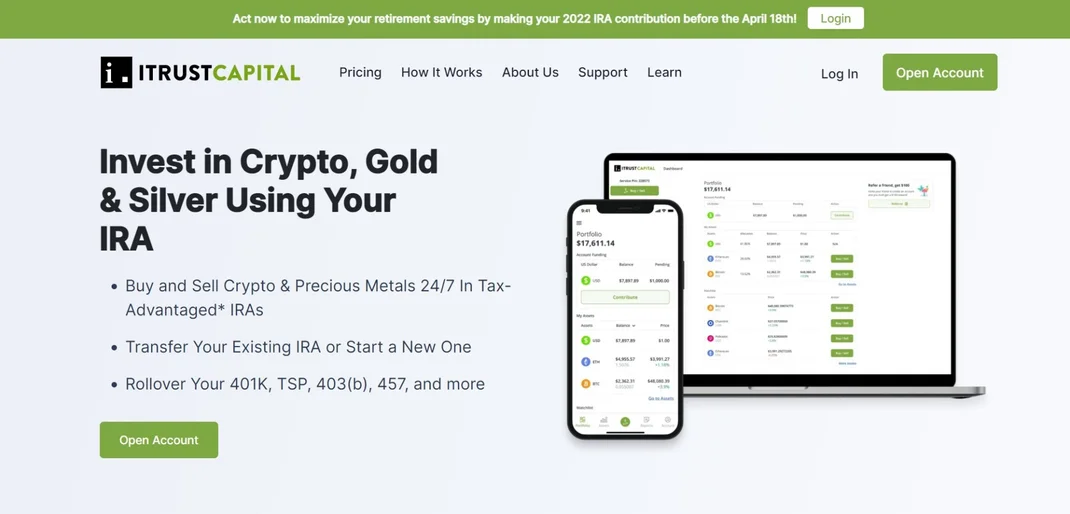iTrustCapital — Safe Account Access & Login Help
Clear, practical guidance for signing in, troubleshooting failures, strengthening security, and recognizing fraudulent messages—designed to help you access your account safely and quickly.
This page is an educational resource to help you sign into your iTrustCapital account securely. It explains the typical login process, the role of two-factor authentication (2FA), common error messages and how to resolve them, and what to do if you suspect fraudulent activity. This is not a sign-in form; for account access always use the official iTrustCapital website or mobile app. Never enter credentials on pages you landed on from an email or unknown message.
Step-by-step: How a typical secure sign-in works
1. Navigate directly to the official site or open the official mobile app. Confirm the URL in the address bar matches the provider's domain and uses https://.
2. Enter your username or email and your password. Use a password manager where possible—this reduces the risk of typos and ensures you’re using a correct, unique password.
3. If 2FA is enabled, you will be prompted for an additional factor. This is often a one-time code from an authenticator app (e.g., Google Authenticator, Microsoft Authenticator) or a secure hardware token. Enter the code or approve the login request.
4. On successful authentication you’ll be redirected to your account dashboard. If at any point the login flow looks different than usual or requests unexpected information, pause and contact support using official channels.
Two-factor authentication: why it matters (and how to keep it safe)
Two-factor authentication dramatically reduces the risk that someone who steals or guesses your password can access your account. Best practices:
- Prefer authenticator apps over SMS for receiving codes—apps are less vulnerable to SIM swapping.
- Store your 2FA recovery codes in a secure password manager or an offline encrypted file.
- Consider a hardware security key for the strongest protection if supported.
Troubleshooting common login errors
If a login attempt fails, try these steps in order:
- Check credentials: Re-enter email/username carefully or use your password manager’s autofill.
- Reset password: Use the official “Forgot password” process. If you don’t receive the reset email, check spam/junk folders and any email rules you may have set up.
- Authenticator codes not accepted: Ensure the device clock is accurate (authenticator codes are time-based). Sync the clock in the authenticator app settings if available.
- Browser issues: Try an incognito/private window, clear cookies for the site, or test a different browser or device to isolate the problem.
- Network restrictions: Corporate or public networks sometimes block authentication services—try a different network or your phone’s hotspot.
Recognizing phishing and fraudulent login prompts
Phishing attempts often try to mimic a legitimate login page or send urgent messages asking you to “verify” credentials. Keep an eye out for:
- Emails with a generic greeting or urgent threats to close your account.
- URLs that are misspelled or use extra words/tokens before the actual domain (e.g.,
trust-capital.example.cominstead of the official domain). - Attachments or links that ask for your full login details, 2FA codes, or recovery codes—legitimate support teams never ask for your password or full 2FA codes.
If an email looks suspicious, don’t click links—open a new browser window and navigate to the service directly. Forward suspicious messages to the platform’s official fraud or security email if they provide one, and report the message to your email provider.
Account recovery: safe steps if you’re locked out
If you lose access to both your password and 2FA device:
- Use the official account recovery form and provide requested identity verification documents only when submitted through the official support portal.
- Avoid sending sensitive documents over email; use secure upload links provided by verified support channels.
- Be prepared to prove identity with government ID and recent account activity details. This helps expedite secure re-enabled access.
Good password hygiene & account hardening
Use long, unique passphrases generated by a password manager; enable automatic password filling to avoid retyping. Regularly review authorized devices and active sessions in your account settings and remove anything you don’t recognize. Keep the device OS and browser up to date so you have the latest security patches. If offered, enable login alerts so you’re notified of new sign-ins.
When to contact support
Contact official support if:
- Your account shows unexpected transactions or settings changes.
- You can’t regain access through the normal recovery process.
- You received a message claiming to be support that requests your password or 2FA codes—report it immediately.
Always use the support contact information published on the provider’s official website or in the official mobile app. Suspicious email addresses, phone numbers, or third-party pages claiming to fix account problems are often fraudulent.
